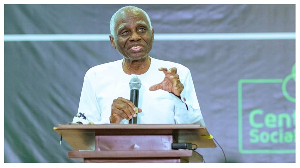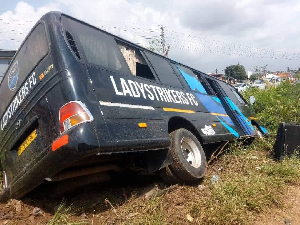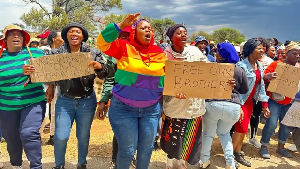Introduction and Background
On Tuesday, 12th September 2017, when His Excellency President Akufo-Addo launched the free SHS (Free SHS) intervention at the premises of the West African Senior High School (WASS), he recited the following Pledge “Because I know that knowledge and talent are not for the rich and privileged alone, and that free education widens the gates of opportunities to every child, especially those whose talents are arrested because of poverty…”…we lift the financial burden off our parents….and the heartrending anxiety that accompanies the beginnings of every school term”, he concluded.
It was obvious from the pledge that this laudable policy was aimed at the poor and poorest.
Four years into the implementation, it is observed that between 10% to 14% of all placed students fail to enroll annually.
Presently, one month after re-opening of SHS, the free SHS secretariat reports that some 30,000 students are yet to honour their admission. This brief puts forth the argument that, most of these students are academically weak from poor families that are unable to afford the cost of Free SHS due to the phenomenon of ‘Day with Hostels’ (DWH) studentship under the Free SHS.
Issues
Factors such as high poverty and illiteracy rates, poor and inadequate educational infrastructure, lack of teaching and learning materials, distance from home to school, parents’ lack of awareness and fulfillment of basic school needs, lack of qualified teachers, high teacher absenteeism and attrition and lack of teacher supervision among others account for the about 70% of rural students scoring above aggregate 30 at the BECE.
About 30% of students under Free SHS are Day Students with majority being placed through self-placement. This self-placement situation usually compelled students to select from a tall list of available schools with many outside their district, and a high probability of being a Day Student.
The options for such students are, to either select a Day School or find a private hostel around as a DWH student; or they forget about Free SHS, which contributes to the minimum of 10% of placed students not enrolling since inception in 2017.
Case Study
This year, just 72 hours after announcing the opening of self-placement, there were over 150 schools with vacancies, but were all Day Schools. As we do every year, Eduwatch was assisting one of the many who come for assistance; one of whom was a 15-year-old son of a farm labourer who had been laid off due to the COVID-19 impact on agriculture.
The boy “Ben” had aggregate 38 from Gbawe Gonse Methodist D/A, a public basic school in Ga South. He chose Building & Construction but could not secure placement in any of the five selected schools, including Wesley Grammar; his selected Day School which is within 10 kilometres from his residence. A quick check through the CSSPS revealed that there was no Technical Institution within proximity in ‘Ben’s’ district; the only Secondary Technical schools available were all outside Greater Accra with the closest being Moree Senior High Technical School (SHTS)in the Abura-Asebu-Kwamankese District of the Central Region.
Coincidentally, during Eduwatch’s free SHS study of 2018, two case studies of Moree and Adienmbra SHSs were made where Day Students from rural Western and Central Region districts lived in rented hostels which were more expensive than the entire free SHS subsidy they enjoyed from government.
Should ‘Ben’ honour his Self-Placement at Moree SHTS, he would spend GH¢ 1,300 each year on hostel and GH¢ 3,200 on food & water i.e., GH¢ 20 a day for at least 160 days an academic year. In total, he requires at least GH¢ 4,500 (excluding items on his school’s prospectus).
Meanwhile, the total amount Government of Ghana (GoG) spends under Free SHS for a Day Student is GH¢ 1,300 per year; meaning, to benefit from the GH¢ 1,300 per year Free SHS subsidy, a poor Day Student in a hostel spends three times more (GH¢ 4,500). Compared to other ‘privileged’ Boarding Students who enjoy free accommodation and food with no transportation cost, it is logical to infer that some of the poor and the poorest, mostly from rural Ghana, for whom free SHS was meant are rather paying more to access same.
The outcome of this narrative is partly the reason why each year, 10% of Basic School graduates who are placed do not honour their admissions. Not all families can afford the GH¢ 4,500 average extra cost, and even for those who manage to foot these bills, not all can sustain same.
Sadly, in the case of ‘Ben’, his father requires GH¢ 4,500 for his accommodation plus extra funds for other items on the school’s prospectus. Like the case of many, this poor father has indicated that he cannot raise the said amount, so his son, one of several others in this situation, will remain at home. This is the story of countless poor Ghanaians for whom the Free SHS intervention was primarily meant.
While this brief is by no means suggesting only ‘rich’ students are Boarders, the question still remains that, “if the Free SHS Policy was introduced for the poor, why are some poor students rather paying GH¢ 4,500 to access what ought to be free, while some of their colleagues, including ‘richer’ students enjoy free accommodation and feeding as Boarding
Students?”
Undeniably, Free SHS has increased enrolment by 30%. However, a cursory look at the Policy suggests that, the increase in enrolment is a function of the removal of Admission Cut Off’s and expanding infrastructure, rather than removal of financial access barriers as originally intended and announced by the President.
Worth noting is that, prior to Free SHS,
candidates with Aggregate 36 and above did not qualify for placement. But the policy has made it possible for candidates with even aggregate 50 to access secondary education, which normally would lead to an increase in enrolment, given expanded infrastructure.
The prevailing situation of the inability of some students to access Free SHS due to poverty, casts doubt on the President’s pledge at the launch of the Policy, that all financial barriers to access have been removed for the poor.
Is it justifiable to say that, the poor now have unrestricted, equal access to Secondary Education opportunities under Free SHS just like the ‘privileged’ considering the plight of ‘Ben’ and the many others like him?
While it is legitimate to argue that every social policy/intervention has deficits/gaps, which this piece recognises, should the excesses be at the detriment of the very people the Policy was originally intended to benefit, four years into implementation?
If the free SHS is not sufficiently inclusive, how can we improve the targeting of the policy towards the needs of the poorest?
Recommendations
The launch of the Free SHS Policy was a critical step in the series of actions needed to set Ghana on the path towards achieving inclusive equitable quality education for all. However, four years on, financial barriers to access still exist, hindering realisation of the full benefits of the intervention. To mitigate this challenge, the Ministry of Education should:
In the short term, provide stipends/cash transfers for Day Students in hostels to take care of transport, feeding and accommodation.
In the medium to long term, initiate a constructive dialogue about the following two options for removing access barriers to secondary education under the Free SHS:
a. Decentralizing the Free SHS, so everyone attends SHS in their locality like South Africa, while reserving boarding schools for scholarship students, including students with promising academic prospects from public basic schools.
b. Accept boarding schooling as a norm, by providing boarding facilities in every school to ensure equity for all students, especially DWH ones, bearing in mind the cost.
At present, one who lives in Madina Zongo, placed as a day student in Anlo Awomefia SHS would rather struggle to raise GH¢ 3,000 school fees for a ‘low cost’ private SHS in Madina than travel to rent, feed and live on their own in the Volta Region at the age of fifteen, while spending more.
Conclusion
Obviously, the removal of financial barriers to access, especially for the poor, which was pledged at the launch of the Free SHS programme has not been fully achieved. It is time to reposition the Free SHS along the equity and inclusion angle, so that the poor would also be given high preference/choice of boarding schools, in accessing ‘genuinely’ free secondary education.
If in doubt about who the poor really are, we can consider the following:
a) Students from Public Junior High Schools living anywhere in Ghana;
b) Students attending low-cost private basic schools in rural districts, and urban/peri-urban slums where there are no public basic schools.
Opinions of Sunday, 25 April 2021
Columnist: Africa Education Watch



















